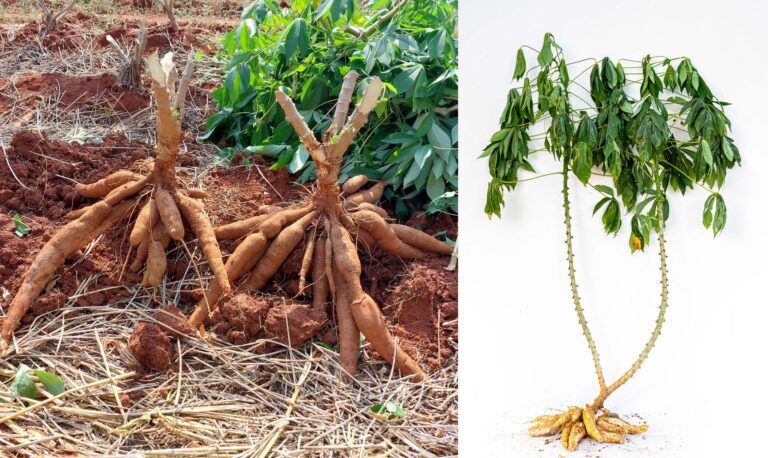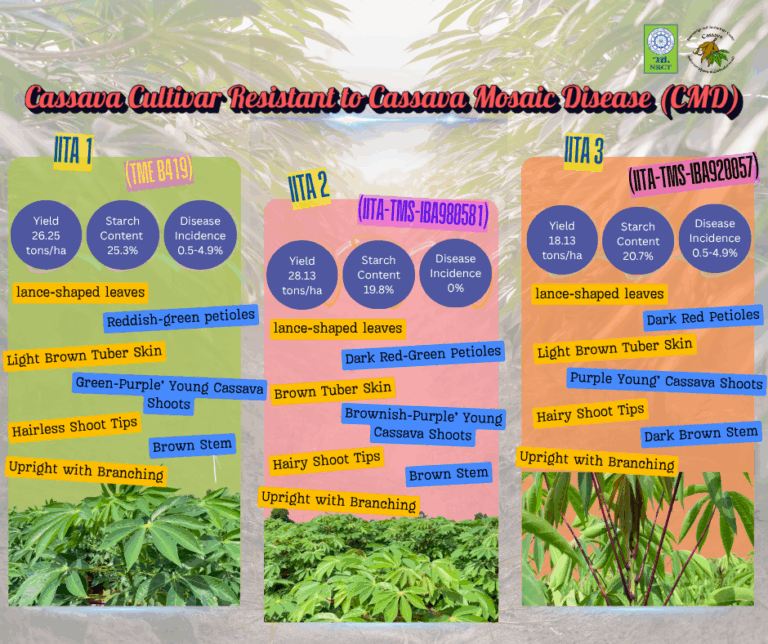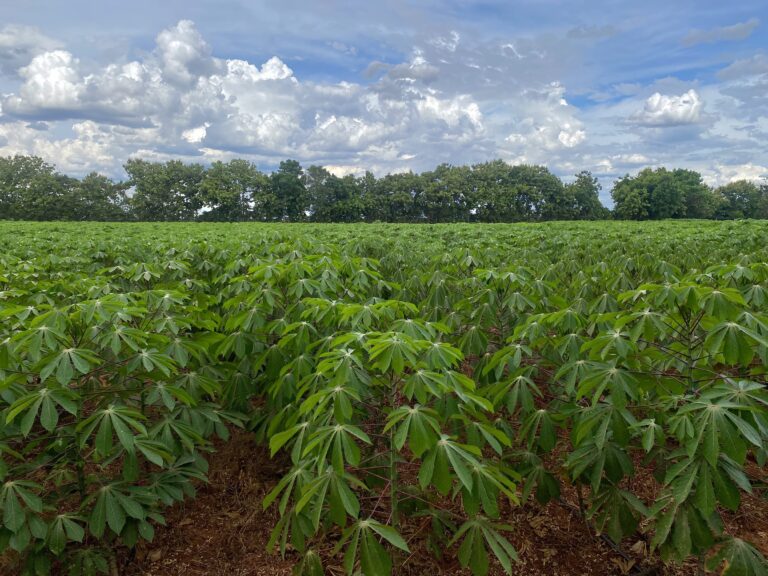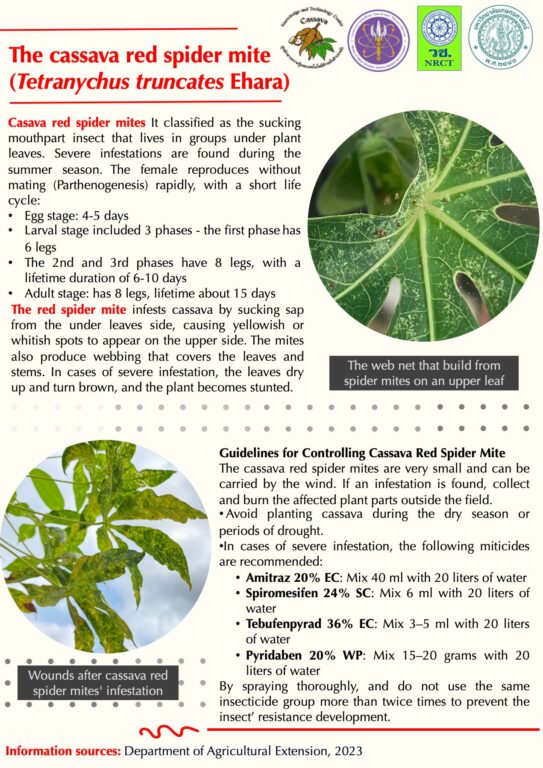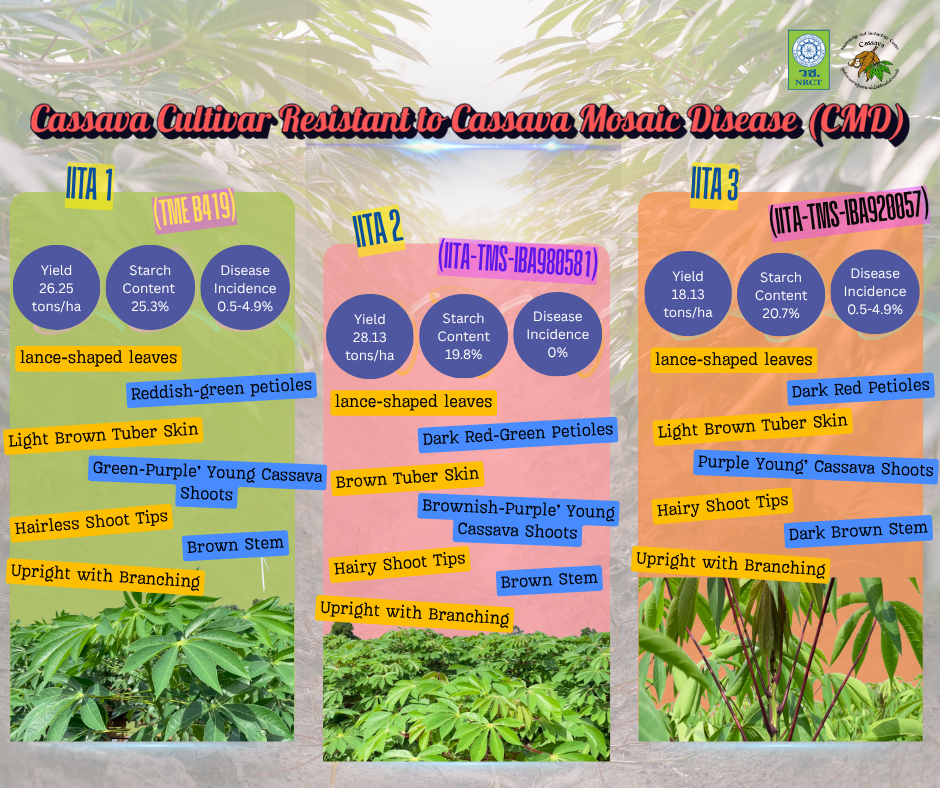
Thailand now has newly developed cassava varieties that are resistant to cassava mosaic disease. These varieties not only offer disease resistance but also produce high yields and high starch content, key qualities in high demand by starch processors and farmers alike for overcoming the ongoing cassava mosaic disease outbreak in Thailand.
Characteristics of the Resistant Varieties
IITA 1
The young leaves are green with a hint of purple, and the petioles are reddish-green. Leaves are lanceolate in shape. The plant has an upright growth habit with limited branching. The storage roots are conical, white-fleshed, and free from constrictions. The root skin is rough and light brown in color. It yields 4.2 tons/rai of fresh roots with a starch content of 25.3%, and shows a disease incidence rate of 0.5–4.9%.
IITA 2
The young leaves have a purplish-brown hue, and the petioles are dark red with a greenish tint. The leaves are lanceolate. The plant is upright and branches low at one level. The roots are conical and smooth with white flesh and golden-brown skin. Fresh root yield is 4.5 tons/rai with 19.8% starch content, and the disease incidence rate is 0%.
IITA 3
The young leaves are purple with dark red petioles. The leaves are lanceolate. The plant has a moderately upright habit with some high-level branching. The roots have a slight constriction, with a conical to cylindrical shape. The root flesh is white, with a rough, dark brown skin. It yields 2.9 tons/rai of fresh roots with 20.7% starch content, and shows a disease incidence rate of less than 0.5–4.9%.
Note: Yield, starch content, and disease incidence may vary depending on planting area, soil conditions, irrigation, and farm management practices. Using resistant varieties is a viable strategy for managing cassava mosaic disease outbreaks in Thailand.
Source : Thai Tapioca Development Institute (TTDI) for providing essential data and contributions.
We would like to express our sincere thanks to the National Research Council of Thailand (NRCT) for supporting.
